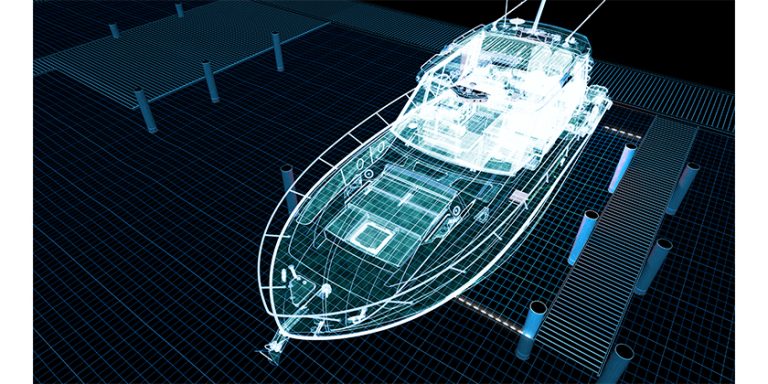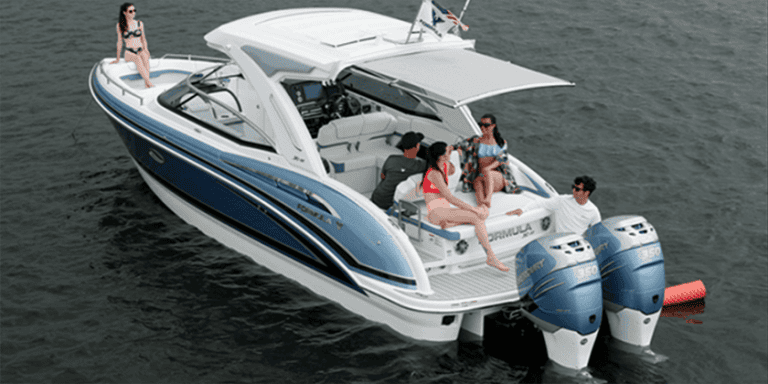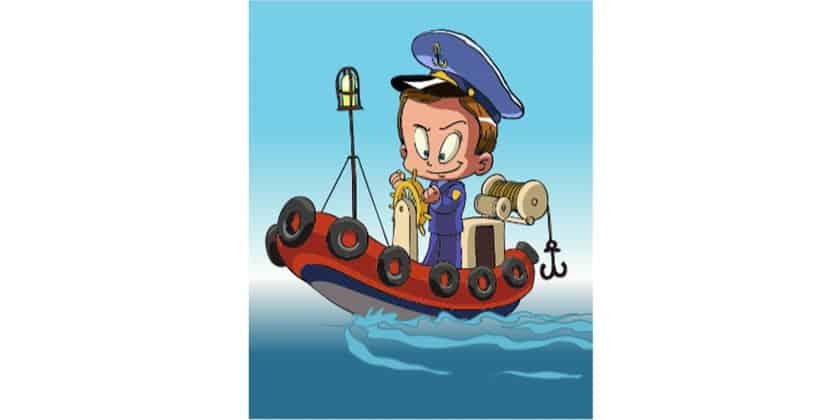Boat Nerd: Improvements to Our Winter Retreat
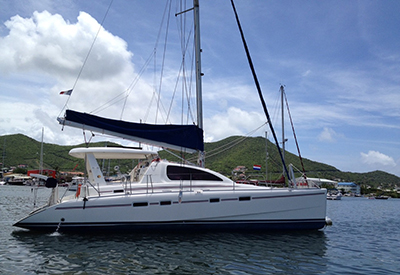
What are some of the improvements we’ve made to our Leopard 43, Peregrine, that have made cruising more pleasant? This time – high output alternators and next issue – a water maker.
Aug 9, 2023
Our Leopard 43, Peregrine, resides in St Maarten
What are some of the improvements we’ve made to our Leopard 43, Peregrine, that have made cruising more pleasant? This time – high output alternators and next issue – a water maker.
High output alternators
When we purchased Peregrine, she had stock Hitachi 80A internally regulated alternators on both engines charging both start and house batteries through solenoids that closed as soon as the alternators produced power. I wanted more control on the charging regime and something that would keep all batteries charged from our newly added solar array when we are on the hook (which is most of the time).
To this end, I redid the engine charging system with two Electromaax Cruiser 140A externally regulated alternators and Balmar 614 regulators charging the house bank and added two Balmar Duocharge units to keep the start batteries fully charged from the house bank. This setup worked reasonably well while we had Lifeline AGM batteries. However, when the house AGM batteries reached end of life after nine years, I decided to replace them with Lithium.
Other than tweaking the charging parameters in our Classic solar charge controller for the lithium batteries, I didn’t need to make changes to our 1.1Kw solar system. While solar normally meets our daily power needs, if we have a couple of cloudy or rainy days (yes Virginia, this does happen even in the sunny Caribbean!), I also wanted the engine alternators to be able to charge the lithium bank in as short a time as possible (to limit engine run time). As lithium banks can accept energy at prodigious rates (we have a 400AH bank and even at 0.5C charge rate, that’s 200A) and they do this until they are fully charged unlike Lead Acid types of batteries whose charge acceptance rates drops quickly as they charge. This means that alternators charging lithium don’t catch a break and output full power until the bank is charged, leading to their potential overheating.
Alternators are only about 50% efficient turning rotational energy into electrical energy with the remainder coming out as heat. Heat comes from two sources primarily: diode drop and copper winding losses (also eddy current losses in the copper and iron). Diodes typically drop 0.6V, and as there are two diodes used on each of the alternators three phases, there is a 1.2V or thereabouts drop in the alternator converting the AC produced by the alternator to DC to charge the battery. At full current that drop becomes a sizable heat source. For example, at 100A that is a steady heat source of 120W. Copper losses are calculated by IxIxR. As the current value is squared, even small resistances can produce substantial losses. For example, if the stator resistance is 37 mohm, at our 100A, we are losing 320W in heat.
To help reduce the heat generated in the alternator, especially small case models, some manufacturers with higher power models remove the rectifier diodes from the alternator. The diodes are then mounted separately (often on their own heatsink) from the alternator reducing the heat the alternator fan blades have to try and dissipate and allowing the alternator to generate higher outputs. See Figure 1.
 Figure 1 Remote Rectifier unit with the 3 terminals for the alternator 3 phase wiring, and the two DC+ and DC- cables.
Figure 1 Remote Rectifier unit with the 3 terminals for the alternator 3 phase wiring, and the two DC+ and DC- cables.
On Peregrine I upgraded the Cruiser alternators to Electromaax 250A Genmax alternators with Remote Rectification (RR). Figure 2 shows the old Cruiser alternator and the new Genmax alternator. Figure 3 shows the alternator installed on one of the Yanmar 3JH4E engines.
 Figure 2 the old Cruiser alternator (silver) and the new Genmax alternator (black)
Figure 2 the old Cruiser alternator (silver) and the new Genmax alternator (black)
I also derated the alternator outputs to 150A per alternator (I have legacy 150A helm current gauges) and 200A total (both engines running) to keep the battery charging current at 0.5C or under for longer battery life. After running one engine/Genmax for an hour @140A the Alternator measured 79C and the RR 72C on my handheld infrared temperature sensor, well below the regulator’s 110C alternator overtemp threshold.
Both Balmar 614 regulators had failed at separate times leading up to my house bank lithium conversion, due I suspect to salt air getting around the push on terminal encapsulation, and so needed replacement. I am currently using an Electromaax AT3 regulator setup with the Genmax
 Figure 3 new alternator mounted on one of the engines with the RR unit and red protective boots
Figure 3 new alternator mounted on one of the engines with the RR unit and red protective boots
alternators but haven’t been totally happy with it. I’m evaluating whether I try the new Electromaax X regulator or switch to the Wakespeed WS500 which can talk on the CAN bus with my Tao BMS. Stay tuned!
As my start batteries are Lead Acid, one flooded and one AGM, both of which have their own different charging parameters, that are again also different form my lithium charging profile, the Duocharge units no longer functioned well. I replaced them with a pair of Victron Orion 18A Battery To Battery (B2B) chargers where I can set the battery charging parameters separately and optimally for each start battery.
Next time – our Watermaker installation
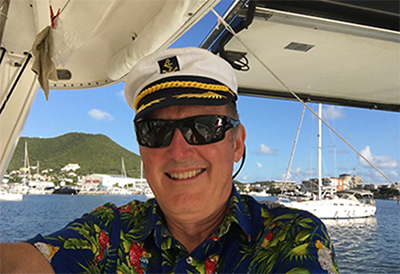 CYOB’s Boat Nerd, Mike Wheatstone, has enjoyed sailing since he was in his mid teens. He bought his first boat in 1980, a Shark. With the growing family’s 2-foot-itis saw upgrades to a Grampian 26, CS34 and finally a Hunter36. A retired electrical engineer, Mike and his wife spend summers on the Hunter (Dragonfyre) and winters in the Caribbean on their Leopard 43 cat (Peregrine).
CYOB’s Boat Nerd, Mike Wheatstone, has enjoyed sailing since he was in his mid teens. He bought his first boat in 1980, a Shark. With the growing family’s 2-foot-itis saw upgrades to a Grampian 26, CS34 and finally a Hunter36. A retired electrical engineer, Mike and his wife spend summers on the Hunter (Dragonfyre) and winters in the Caribbean on their Leopard 43 cat (Peregrine).
Got a question or comment for Mike? Please send them along to cyonboard@kerrwil.com and put “Nerd” in the subject line.

